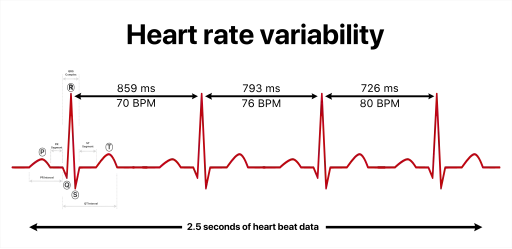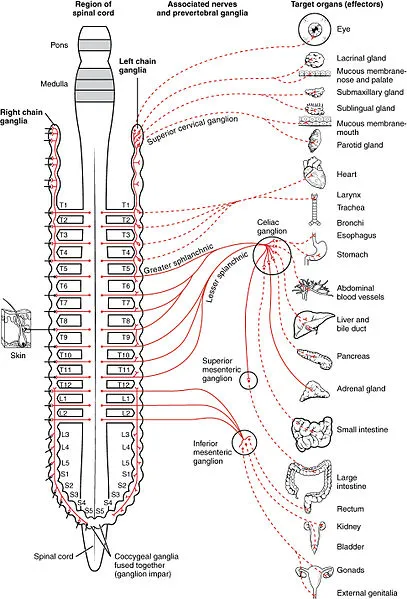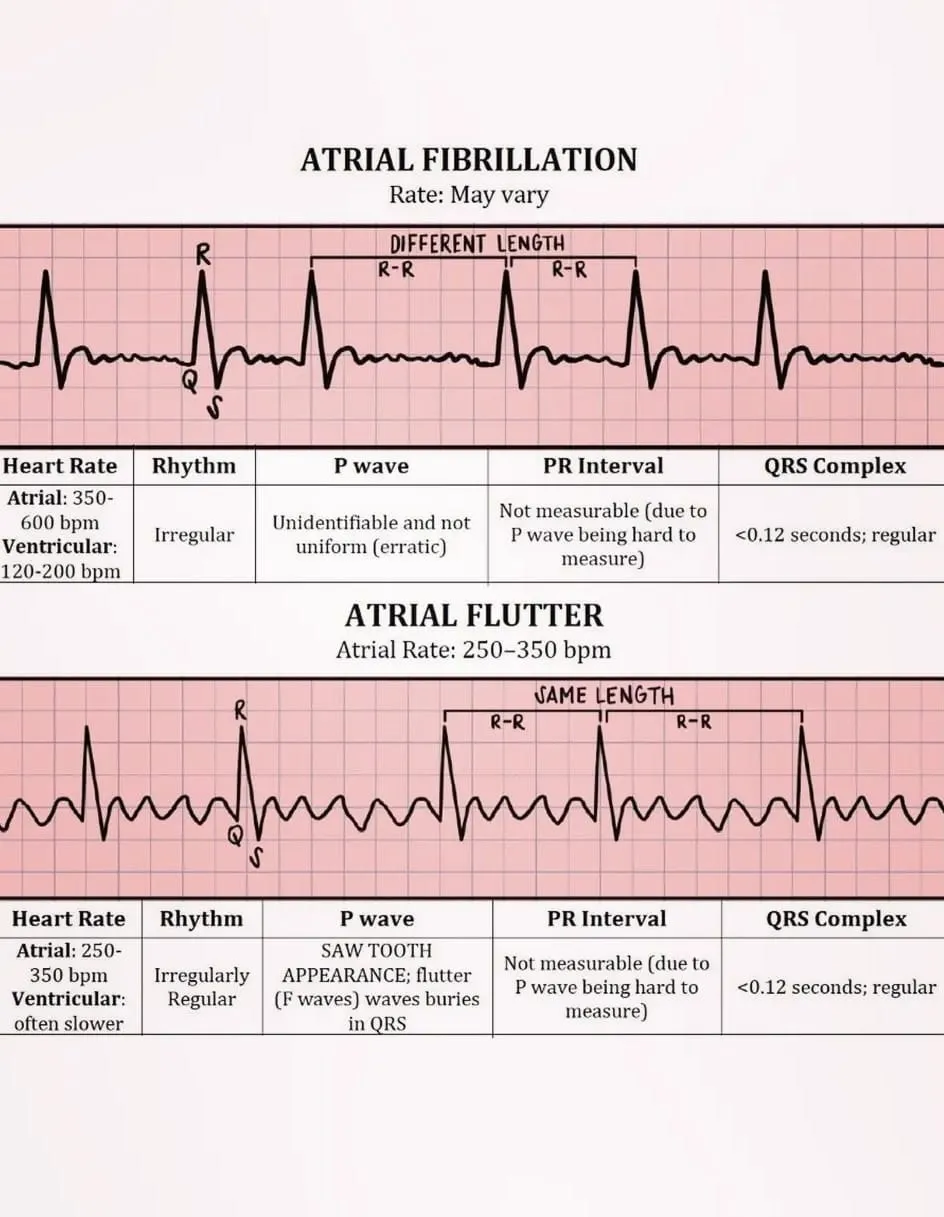About HRV
Your heart rate variability (HRV) is a powerful—if complex—metric of your overall health. Your Apple Watch automatically measures HRV, including while sleeping. We’ll try to give an overview here, but you could really write a whole book on what HRV means.
What is HRV (heart rate variability)?
A healthy heart is not a metronome: as your heart beats, the timing between each beat shifts slightly. For example, one heart beat may come 900 millseconds after another, and then the next one 950 millseconds after that. That’s healthy and good.
Your HRV measures the variation in time between these heart beats. The unit of HRV is millseconds, and a normal HRV is 18-76ms.

While HRV is derived from heart rate, it’s actually a broader window into your overall health.
The main influence on HRV is your autonomic nervous system (ANS). Since your ANS is connected to your liver, kidney, stomach, brain, and more, HRV is actually a really powerful metric of many different organ systems in your body. We’ll cover the autonomic nervous system more below, including the how HRV sometimes reflects medical conditions like anxiety, depression, dysautonomia, digestive tract problems, and more.
What’s the normal range of HRV on Apple Watch? What’s a good HRV?
Anything between 18 to 76 ms is a normal heart rate variability. Within 18-76ms, higher HRVs are usually better.
What’s a very low HRV on Apple Watch?
Depending on age and sex, below 18 ms is a low HRV. This is around the bottom 10%. An HRV above 76 ms would put you in the 90th percentile of Apple Watch users.
How Apple Watch calculates HRV (SDNN)
The Apple Watch measures the time of each heart beat using its optical heart rate sensor. Apple Watch calculates HRV using SDNN: the standard deviation between normal-to-normal heart beat intevals.
SDNN is defined mathematically as:
SDNN = sqrt(Σ(NN_i - mean(NN))² / (N - 1))
Here’s an example. Let’s say your heart is beating around 60bpm. The spacing between heart beats isn’t going to be exactly 1 second—it will vary a little bit, beat to beat. Let’s say the first heart beat comes, then a second one 1040 ms later, then a third heart beat 960 ms later, then a final heart beat exactly 1000ms later. Your NN intervals are then 1040ms, 960ms, and 1000ms.
Your average N-N (normal to normal) interval is 1000ms. The standard deviation is 32.6 ms. That means your HRV is 32.6 ms, using the SDNN method. Other wearables like Whoop use different formulas for HRV, such as RMSSD, which we’ll explain now.
SDNN vs RMSSD for HRV
There are several formulas to calculate HRV. The two most common are SDNN (used by Apple Watch) and RMSSD:
- SDNN (standard deviation of normal-to-normal R-R intervals). The Apple Watch’s built-in HRV metric is SDNN, which is a good metric of cardiac rhythm data throughout the day. SDNN is often used in medical research as a summary over a 24 hour period.
- RMSSD (root mean square of successive differences between RR intervals). Since RMSSD calculates differences between successive intervals, it captures more short-term, beat to beat variability. This reflects the action of the parasympathetic nervous system (explained in the next section), and is more often used in fitness training. Some third party apps also calculate RMSSD as part of a recovery score (similar to Whoop).
- pNN50 is the percentage of normal-normal intervals that differ by more than 50ms.
- Frequency domain methods break the NN intervals into waves of different frequencies, and then measure the power in each band. The most typical bands are high frequency (0.15 to 0.4 Hz), low frequency (0.04-0.15 Hz), and very low frequency (VLF) (0.0033 to 0.04 Hz). Frequency domain HRV metrics aren’t used in Apple Watch since they require long measurements (about 5 minutes), which would drain battery.
How the autonomic nervous system drives HRV

HRV is influenced by your autonomic nervous system, which has two branches: the sympathetic nervous system (your “fight or flight” response) and the parasympathetic nervous system (your “rest and digest” response, which is controlled by the vagus nerve). When the sympathetic nervous system dominates, HRV is lower. When the parasympathetic nervous system dominates, HRV is higher.
HRV meaning
A low or high HRV can have many meanings and causes, including mental health, dysautonomia, diabetes, or simply stress. Let’s go through each potential cause.
Causes of low or high heart rate variability on your Apple Watch
A common cause of temporary low HRV on your Apple Watch is stress or intense fitness training. However, medical conditions can also cause low HRVs (or high HRVs). The most common conditions that affect HRV are dysautonomia, anxiety, depression, nerve damage, abnormal heart rhythms, and some gut health conditions.
Dysautonomia, Long Covid, POTS & low HRV
One of the hallmarks of dysautonomia is imbalance between the sympathetic nervous system (often overactive) and the parasympathetic nervous system (often withdrawn). People with dysautonomia, POTS, and Long Covid often haver low HRV. While HRV itself is not used in diagnosis of POTS, the pattern of heart rate and blood pressure when going from laying to standing is. You can book an appointment with an Empirical Health doctor to get POTS testing and treatment.
Anxiety, depression, & low HRV
Low HRV can sometimes be a sign of depression or anxiety. Improving HRV through practices like mindfulness, physical activity, stress management, and medication can support better emotional regulation and mental health.
Nerve damage & low HRV
Nerve damage (for example, from diabetes) can cause low HRV. Nerve damage affects HRV by disrupting the balance and communication between the sympathetic and parasympathetic branches of the autonomic nervous system. When nerves responsible for these regulatory pathways are damaged, the body’s ability to adjust heart rate in response to stressors and environmental changes becomes impaired. This leads to a decrease in HRV.
Abnormal heart rhythms can cause high or low HRVs
Finally, very low or high HRV can also be caused by an electrical problem in the heart (for example, atrial fibrillation, atrial flutter, or supraventricular tachycardia). In these cases, an ECG can give more diagnostic information on exactly what is happening in the heart’s electrical system.
Apple Watch’s ECG can identify abnormal heart rhythms causing low or high HRV

The image above shows two common abnormal heart rhythms, atrial fibrillation and atrial flutter, on an ECG. Atrial fibrillation is highly irregular, leading to high HRV. Atrial flutter is very regular, leading to no or low HRV. Either of these rhythms require attention from a medical professional.
The Apple Watch Series 4 and above include an FDA-cleared ECG sensor that can help distinguish whether low or high HRV is caused by an abnormal heart rhythm. The current Apple Watch Series 11 and Ultra 9 (released in 2025) both include the ECG sensor, but not the Apple Watch SE3.
Digestive tract & HRV
Since the vagus nerve is connected with your stomach, intenstines, liver, and so on, low HRV can sometimes be correlated with problems in the digestive tract.
What to do if your Apple Watch HRV is very low (or high)
Because HRV correlates with so much in the body, it’s a powerful metric but doesn’t give specific diagnostic information on exactly what’s wrong. If you have concerns or questions about HRV, it’s best to talk with a doctor about your specific medical situation. You can book an appointment through the Empirical Health app.






